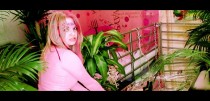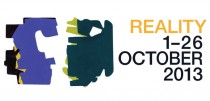The Tramway, formerly the Museum of Transport and, before that, a real life tram depot, has been at the forefront of Glasgow’s visual and performance culture for over twenty years. Originally rescued in 1988 by the team that brought Peter Brook’s Mahabharatato Scotland, its huge spaces are a haven for the most imaginative creatives from around the world. By bringing in international artists on a regular basis, it exposed the West Coast’s communities to the best radical dance, drama and visual art, playing a part in the growth of both theatre companies like Cryptic or Vanishing Point, and the Scottish branch of the neo-conceptualist revival.
The history of Tramway official starts in 1990, with the Capital of Culture. The connections made in that year led to an ongoing programme of performance that included regular visits from Peter Brook, Robert Lepage, Les Ballets C de la B and Belgium’s Victoria. In the past five years, Tramway has entered a new phase. The addition of a Hidden Garden out the back, the arrival of Scottish Ballet in a purpose built wing and a new emphasis on community engagement – much in the fashion of contemporary art policy – suggest that Tramway is moving in a new, dynamic direction.
There are two “theatres” within Tramway: the majestic T1, dominated by the apparently ancient red wall, built for the Mahabharata; the more intimate T4, a long, versatile space ideal for solo and immersive performance. The stage in T1 is large enough for an opera house, and has hosted large scale ballet, opera and even orchestras. T4 was, for many years, the home of Into The New, the graduating programme of the Royal Scottish Academy’s contemporary performance degree.
Despite a location away from the city centre, Tramway has a profile that extends beyond the city. Its support of choreography that is more usually found in major venues, such as Sadler’s Wells, has made it something of a cult within the dance community. Aside from the visitors, it has supported local and emerging artists through a series of schemes. This heritage is reflected in the new dance studios, that offer residencies for artists like the goddess Iona Kewney or punk icon Linder.
During the IETM, Cryptic present Orlando – also part of Glasgay! An appropriate choice, as Cryptic’s artistic director Cathie Boyd was inspired by Tramway during the year of the City of Culture. Her willingness to make large scale theatre, that pulls on opera, technology and elaborate staging echoes the diverse companies that have graced the former tramshed.
Both a fine example of how industrial spaces were occupied by the arts when traditional industries began to disappear, and an ongoing experiment in linking performance, visual art and public space, Tramway is worth a visit for far more than just a show. The Hidden Garden is a small oasis in a very urban city, the use of the cafe by the local community reveals the various creative groups at work. A brief tour unveils art classes and the rehearsals of Junction 25, Scotland’s most experimental youth theatre. A building so idiosyncratic can never be an emblem of Glasgow’s culture, yet it represents the best of the West Coast: individual, lively and constantly surprising.














Comments